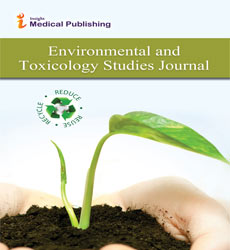Market Analysis on Pollution Control 2020
Daniele De Wrachien
Retired Professor, Agriculture and Environmental Sciences The State University of Milan, Italy E-mail: daniele.dewrachien@unimi.it
Air and Water Pollution are significant environmental problems in Netherlands and all over the world which includes Contamination of Water, Air and Soil due to the incorporation or substitution of new compositions into them which lead to a drastic change in their nature and might even cause depletion and deterioration of the existing natural materials. Pollution of the country's rivers results from industrial and agricultural pollution, including heavy metals, organic compounds, nitrates and phosphates.
Pollution index is varies in different cities. In Utrecht city the pollution index was 34.26 while 30.98 for Amsterdam and 25.89 for The Hague (Den Haag).
Exp Pollution index for Utrecht city, Amsterdam and The Hague are 58.16, 51.83 & 42.4 respectively.
The ambient levels of ozone (O3), black smoke (BS), sulphur dioxide (SO2), nitrogen dioxide (NO2), carbon monoxide (CO) and particulate matter was studied in the Netherlands. Air quality was 71.54% which is considered relatively high, Drinking Water Quality and Accessibility was 89.95% considered Very high, Water Quality 78.76%. According to the new sources and data these values seem depleting accordingly over past few years.
The pollution levels as per statistics drawn from different sources and pollutions for air, Drinking Water Pollution and Inaccessibility, Noise and Light, Water 28.36%, 10.04%, 38.68%, 21.24% respectively.
Particles with a 50% cut-off aerodynamic diameter of 10 μm BS, SO2, NO2 and CO are also considered. This may partly be due to a better precision of relative risk (RR) estimates for the deaths in these age groups. Significantly various pollutants like CO, SO2, BS would be responsible for different disorders. estimates for deaths between 45–65 years tended to be smaller than those in >60 years, with the exception of ozone; for cardiovascular mortality the RR for PM10, O3 and CO were similar in these age groups.



Open Access Journals
- Aquaculture & Veterinary Science
- Chemistry & Chemical Sciences
- Clinical Sciences
- Engineering
- General Science
- Genetics & Molecular Biology
- Health Care & Nursing
- Immunology & Microbiology
- Materials Science
- Mathematics & Physics
- Medical Sciences
- Neurology & Psychiatry
- Oncology & Cancer Science
- Pharmaceutical Sciences
